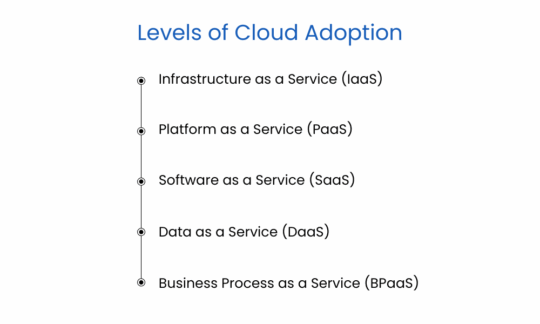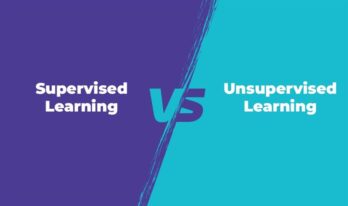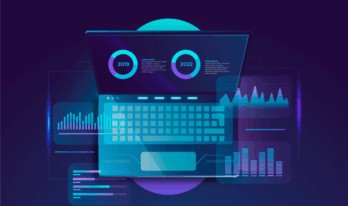In this modern age of digital revolution, data has become equally important as oil once was. Data plays a crucial role in facilitating and optimizing the day-to-day business operations of an organization. As this data is sensitive information, it has to be protected and ensured that it doesn't fall into the wrong hands. Also, as this data grows exponentially, the space required to store the data is so consuming.
This data cannot be stored in your organization’s network anymore. This data can get misplaced, manipulated, and be tampered with if it’s kept locally. There could be several other consequences, eventually leading to losing clients.
Should the companies switch to Cloud Strategies?
Cloud has become the most sought-after solution for optimization requirements such as availability, accessibility, infrastructure, performance, etc.
But does this approach indeed turn out to be the ideal solution? Are the companies going for the cloud strategy without even fully understanding the suitability of it?
The answers to these questions and many others like it lie in the requirements of a company and how cloud strategy will help a company to improve its bottom line.
What is Cloud Adoption?
According to HCL Technologies, the strategic move by organizations to reduce costs, mitigate risks, and achieve the scalability of database capabilities is known as the process of Cloud Adoption.
The Enterprise-Ready cloud service availability depends on the size of adoption.
Essentially, the cloud is a scalable, flexible, and per-use payment-based model for the consumed IT Services.
Levels of Cloud Adoption
-
- Infrastructure as a Service (IaaS):
The form of cloud computing that can be accessed throughout the network with the of storage and/ or compute capabilities.
-
- Platform as a Service (PaaS):
The platforms on which the web-based applications can be built such as web, application, database servers, and other security-related mechanisms.
-
- Software as a Service (SaaS):
Subscription-based and centrally hosted end-user license applications provided as a service.
-
- Data as a Service (DaaS):
Information or data delivered from the cloud consumed as analytics interface or marked as raw data sets.
-
- Business Process as a Service (BPaaS):
Business process services in alignment with a measurable business outcome which are delivered through the cloud.
Benefits of Cloud Adoption:
-
- Financial Benefits
- Cost Reduction
- Reduced total cost of ownership
- Reduced CAPEX
- Improved Cashflow
- Responsive Benefits
- On-Demand availability of computing services
- Universal Access
- Agile Provisioning
- Other Benefits
- Robust System
- Fast Deployment
- Consistent Delivery
- Product Standardization
- Secured Platforms
- Financial Benefits
What is Cloud Migration?
The process of moving data, applications or other business applications from the company’s computers to the cloud or the transfer of the same from one cloud environment to another.
When the companies have already adopted the cloud policy and reached to a certain level where the existing infrastructure may not be viable, the companies need to turn to Cloud migration policy.
You can compare the alternatives available to you and decide on the basis of that as to which Cloud Service Provider should be chosen.
In Some cases, there could be an upgrade to your current services with the existing service provider; it is also part of the Cloud migration.
In most of the cases, the cloud migration means switching from one cloud service provider to another, and it is called as cloud service migration.
Cloud Services for Business Transformations:
Whether you are adopting to the cloud services for the first time or looking for an upgrade to the existing services, i.e., whether you are opting for Cloud Adoption policy or for Cloud Migration policy you need to consider following points.
-
- How and when to use different Cloud Service providers?
Depending upon the business operations and applications, the level of adoption or, in cases, migration.
-
- How to ensure switching to the cloud makes commercial sense?
Create a plan and, as per the business applications and/or operations needs, implement the cloud models
-
- How to ensure the continuity of Services with different service providers?
Data compatibility is a major concern for most of companies these days. You need to ensure that the compatibility between the different service providers is maintained.
-
-
- Ensuring that the required skill sets are met
- Managing the suppliers
- Data security
-
The Bottom Line
With the digital revolution, there has been a paradigm shift in the way companies are operating. ‘Choosing Cloud’ is not just an alternative anymore; it’s becoming a necessity. If your organization is new to cloud services, plan and implement the models carefully, as it will have a long-lasting impact on the future of the company. So choose the ‘Cloud Adoption’ keeping above mentioned things in mind.
If your organization is already using the cloud services and is in need of upgrading the services or switching the service providers; make sure that compatibility, supplier management, and data security are matched as per your requirements.
You may also like to read:
Top 8 Benefits of Cloud Migration





